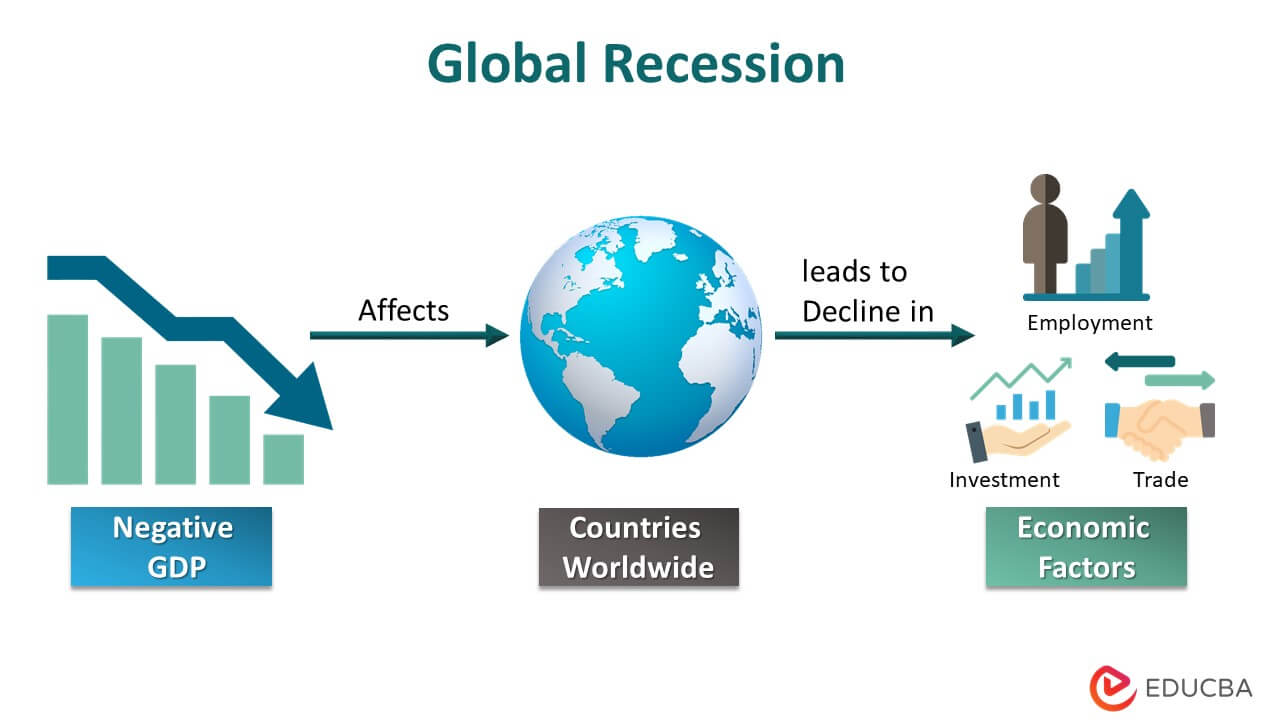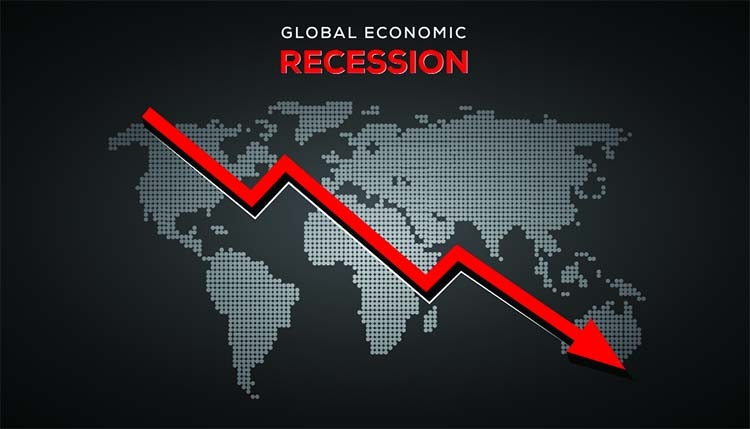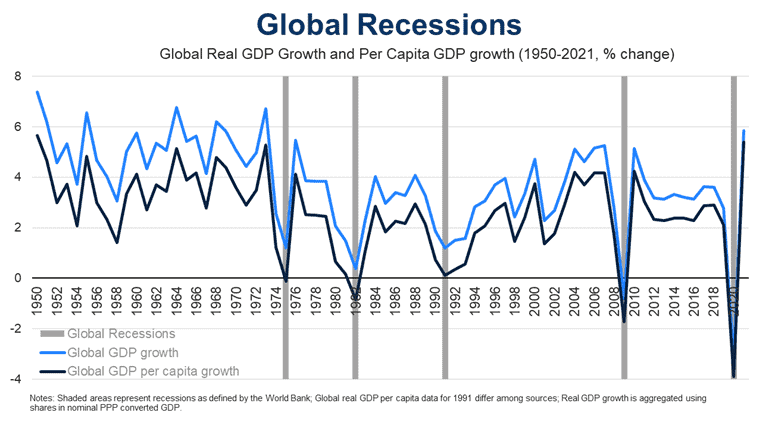Signs of a Global Recession: Spot the Red Flags Early
The economy is a beast that never sleeps, and right now, it might be growling. You know that uneasy feeling you get when the sky goes dark and the wind picks up? That’s how the markets feel when trouble brews. A storm might be coming, and it’s not the kind you can wait out with a cup of tea. We’ll dive into the murky waters of economic indicators to spot those critical signs of a global recession.
From the restless waves of stock markets to the chilling rise in unemployment rates, I’ll show you how to read the signs before the rain hits. We’re here to decode complex numbers into straightforward facts. Settle in, because we’re about to break down why your wallet gets lighter when the financial forecast calls for storms.
Identifying Early Warning Signs of Economic Downturn
The Impact of Stock Market Volatility on Global Economies
Stock markets can tell us a lot about our economy’s health. When prices there start to drop hard and fast, it’s like a giant red flag waving at us. Think of the market as the heart of the economy. If it beats weird, something’s not right. These crashes bring a chill to the global economic climate and hit our wallets.
When markets drop, fear spreads. People and companies pull back on spending. This can start a ripple effect. Less spending means less demand for goods. Without sales, businesses must cut costs, which often leads to layoffs. And when people lose jobs, they spend even less. It’s like a bad cycle that keeps repeating.
Detecting Changes in Unemployment Rates as Precursors to Recession
Job numbers are another key sign. When more and more folks start to lose their jobs, it’s often a signal that a recession may be close. But it’s not just about raw numbers. We must also look at the types of jobs going away. Are they from a key industry? Are lots of sectors affected? If yes, it could mean trouble.
An increase in unemployment rates is like a cold spreading through a school. Once one person gets it, many others could too. The job market can give us a heads-up before the full-blown illness of recession hits. And, just like getting a flu shot, spotting this early can help us prepare.
These early warnings help us brace ourselves. They are like changes in the wind that tell sailors a storm is coming. We can’t stop the storm, but we can get our boats ready. And in the economy’s case, we can make plans to protect our money and jobs.
In both cases, we should pay close attention. What happens in stocks, and who’s losing or finding work, can guide us. That way, we’re not caught off guard when tough economic times hit. Understanding these early signs is like having a secret map that shows where the treasure is – or in our case, where the landmines are. So, let’s keep our eyes wide open and watch these signs closely. They just might help us avoid the next big economic crash.
Assessing Market and Commodity Trends for Recession Indicators
Industrial Production and Commodity Price Trends
When we think about economic health, we look at factories first. How much they make is a big clue. If you hear that factories are making less, it’s like a warning light flashing. This dip in making stuff, or “diminished industrial production,” hints at trouble.
Now, let’s chat about stuff we dig up or grow, like oil or wheat. These are “commodities.” Their prices bounce around a lot. When prices fall, it can suggest that not as many people or businesses need them. This can be due to less demand because folks are worried and spend less. And guess what? This could mean a global economic decline is creeping up on us.
Global Trade Patterns and Their Influence on Economic Stability
Let’s play detective with trade. If countries buy and sell less to each other, we call this a “global trade slowdown.” It’s like when friends stop trading baseball cards – something’s up. This slowdown can mess with jobs and how much money countries make. It shakes up the stability we all count on.
If nations start to protect their stuff – think of it as keeping their toys to themselves – we call this “protectionist trade.” It may seem like a good idea at first, but it can start a chain reaction. Other countries might do the same, and before you know it, trade gets all tangled up. It’s like a knot no one can untie.
These shifts in trade can make businesses worry. They’re not sure if they can sell their goods. So, they might pause making things or start letting workers go. These are the “layoffs and job cuts” you hear about. And it stings, because it means families earn less.
When companies earn less, they spend less on big projects. This “dip in business investments” means they’re playing it safe. They’re afraid to bet on a shaky future. This caution can spread, and soon everyone’s hunkering down. It’s like when you save your allowance for a rainy day.
Now, not all business play it safe. The smart ones might put money into “recession-proof industries.” These are the ones that keep going, even when times are tough. Think about the essentials, like food and healthcare. No matter what, people need to eat and stay healthy.
Remember, finding these clues isn’t just for experts. Anyone with sharp eyes can spot these signs. Think of it like a game where you zoom in on hidden pictures. Once you know what to look for, you can brace yourself and maybe even find safe spots in stormy times.
These trends, they’re like pieces to a giant puzzle. It’s my job to put them together and see the whole picture. By keeping an eye on production, prices, and trade, we can better prepare for whatever comes next. Whether it’s stocking up or buckling down, being ahead of the curve keeps you safe.
Analyzing Consumer and Corporate Health
Consumer Confidence and Retail Sales as Economic Thermometers
We can spot signs of a global slump early by watching two key things. First, how do people feel about the economy? This is called consumer confidence. Next, are people buying less stuff? This means retail sales are down. Both signal trouble.
When people feel unsure, they tend to hold tighter to their cash. They spend less, especially on big things. If you see many people doing this, it might mean a downturn is coming. Fewer sales in shops mean businesses make less money. This can start a chain of bad events in the economy.
As someone always scanning for red flags, I see consumer confidence as a clear sign. Stores sell less, folks are wary, and that worry spreads. It matters a lot because when the crowd feels shaky, businesses get hit. They hire less and might even cut jobs.
Shrinking sales don’t just spell trouble for local shops. Big companies feel it too. If they see profits dipping, they might warn investors. They’re saying, “Heads up, we might not make as much money.” This is a profit warning, and seeing a lot of them is a bad sign.
Insights on Corporate Profit Warnings and Credit Spread Fluctuations
Now, beyond the shops and malls, let’s talk about bigger companies. Profit warnings show they’re in a tough spot. But there’s another thing we watch: credit spreads. This is a bit like a stress test for companies.
Imagine a friend who’s always borrowing money. If suddenly it’s harder for them to borrow, or the interest shoots up, you’d worry, right? Same goes for big companies. When they find it harder to borrow, or it costs more, red flags go up everywhere.
Credit spreads measure the risk of lending to companies over a sure bet like government bonds. A widening spread—meaning riskier lending—often hints at worse to come. It shows that trust is down, and without trust, finance can wobble like a chair with a broken leg.
These signals, from shop sales to company loans, are our canaries in the coal mine. They warn us before the air gets too thin. Spotting these warnings early on helps us brace for what might come next.
Using these signs, we stay a step ahead. We see the storm clouds pile up while there’s still time to take cover. And in a world that’s always turning, always changing, that’s how we keep our balance. It’s how we navigate the sometimes choppy waters of our global economy.
Macroeconomic Policies and Movements as Recession Barometers
Central Bank Policies and Fiscal Responses to Economic Challenges
Money moves our world. The folks who control it can cause waves. Central banks manage money flow and help keep economies steady. When they change interest rates, or buy and sell bonds, they signal trust in the economy’s health. These are central bank policies. If they’re worried, rates may go down to encourage spending. When rates go up, they might be trying to cool off a too-hot economy.
Now picture the government. They can either tighten or open their spending tap. That’s fiscal policy. A spending spree might happen before trouble hits. It’s like putting on armor to fight a financial fall. On the flip side, if the government starts cutting back, they might be bracing for harder times. Both central banks and governments try to steer away from economic downturns. They use these tools at their disposal to help or to signal caution.
In a way, they’re the captains of our ship, navigating stormy economic seas. How they act tells us if rough waters are ahead. Keep an eye on what they do and you can spot some big red flags early.
Understanding Inverted Yield Curves and Bond Market Signals
Bonds are like loans you can buy. They’re promises to pay you back later with interest. Most times, the longer you wait, the more you get. That’s how it should work. But sometimes things flip, and short-term loans pay more than long ones. That’s an inverted yield curve.
Smart folks look at this as a warning that people don’t trust the future. They’d rather get their cash back soon, even if it’s less. This odd curve has shown up before past recessions. It’s like a secret code that can tell the future. But it’s not perfect. It’s just one sign among many.
Still, you can see why an inverted curve scares people. It’s not the norm, so it grabs our attention. The bond market can be a crystal ball. It’s not magic, just many people guessing what money will be worth later. When their guesses look strange, it’s time to pay close attention. We can learn a lot by watching how others bet their cash on tomorrow.
In a nutshell, the economy sends signals all the time. It’s just not always loud and clear. Learning the language of money—how banks and bonds talk—can give you a heads-up to duck before recessions hit. Keep your eyes peeled for moves by the big money captains and those tricky bond signals. They can tell you when to take cover or when it might just be safe to sail on.
In this post, we’ve tackled how to spot early signs of an economic slump. We saw how shaky stocks can stir global finance trouble, and why rising jobless rates often signal a downturn ahead. We then dived into market patterns, noting how industry and trade shifts can warn us of hard times. We checked on the health of shoppers and companies, with their spending and profits giving us clues. Lastly, we explored how big policy moves and bond trends can act as a downturn alarm.
Each sign is a valuable piece to understanding our economy’s puzzle. Keep your eyes on these indicators, and you’ll be better prepared for what lies ahead. Stay smart, stay informed, and be ready to act when these signals flash red. Your finances will thank you!
Q&A :
What are the typical signs that indicate a global recession might be approaching?
Economic downturns can be foreshadowed by several indicators. Usually, high unemployment rates, significant drops in consumer spending, and consistent declines in stock markets can be telltale signs of an approaching global recession. Other early warning signs can include a decrease in manufacturing, widespread layoffs, and a fall in real estate prices, all hinting at a looming global economic slowdown.
How does inflation relate to the possibility of a global recession?
Inflation can be both a symptom and a cause of a global recession. Excessively high inflation can erode purchasing power, leading to lower consumer spending. Alternatively, if inflation runs below expectations, it may be a sign of weak demand, which is another hallmark of a recessionary environment. Policymakers often try to control inflation through interest rates, and if these measures are not carefully implemented, they can tip an economy into recession.
Can a recession in one country trigger a global recession?
While it is possible, much depends on the economic weight of the country in question. If a country with a significant impact on global markets—like the United States or China—enters a recession, it can have far-reaching effects on international trade and investment, potentially sparking a global downturn. The interconnectedness of the global economy means that financial crises can easily cross borders through channels like international banking, trade imbalances, and investor sentiment.
How long do global recessions typically last?
The duration of global recessions varies widely and is influenced by a myriad of factors, including the severity of the downturn, the response of governments and central banks, and existing economic conditions. Historical data suggest that global recessions can last anywhere from several months to a few years, with recovery times also varying considerably.
What steps can governments take to prevent or mitigate a global recession?
To prevent or mitigate the effects of a global recession, governments can implement a range of fiscal and monetary policies. Fiscal policies might include increased government spending, tax cuts, or direct financial assistance to boost economic activity. On the monetary side, central banks can lower interest rates to encourage borrowing and spending, or engage in quantitative easing to inject liquidity into the economy. Coordinated international efforts can also play a critical role in addressing the challenges of a global recession.



